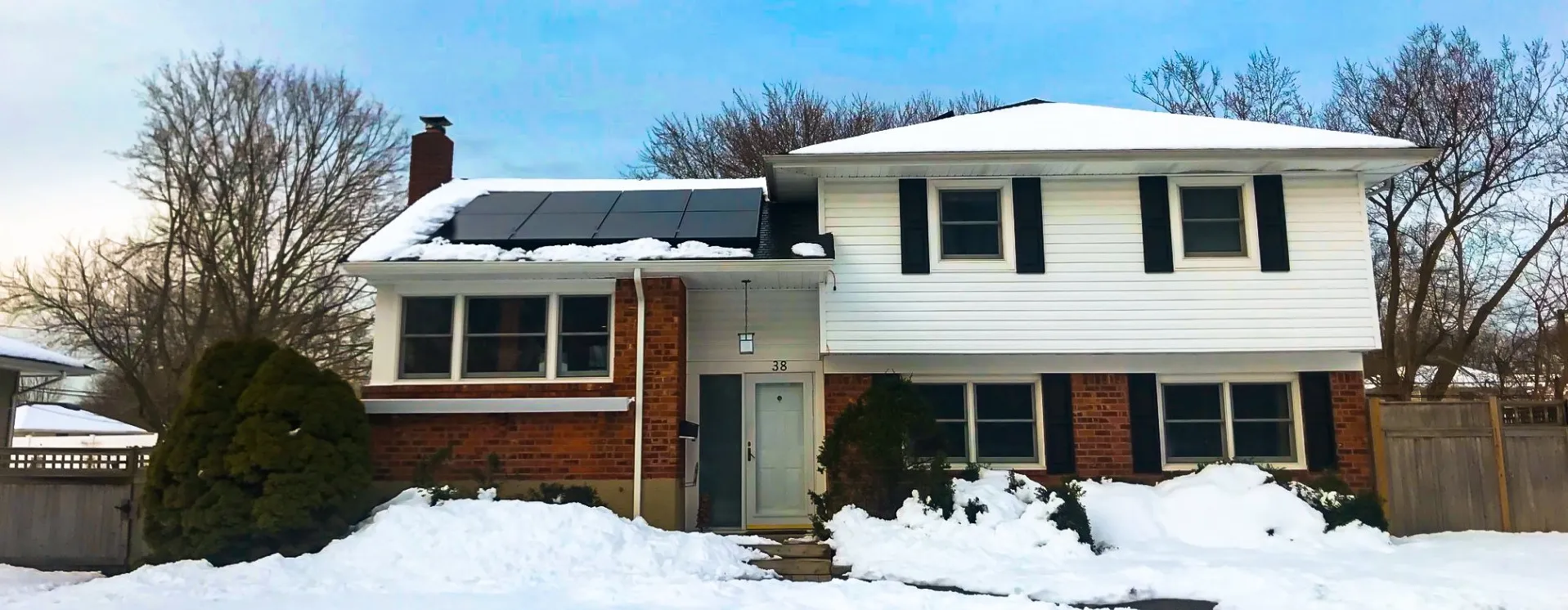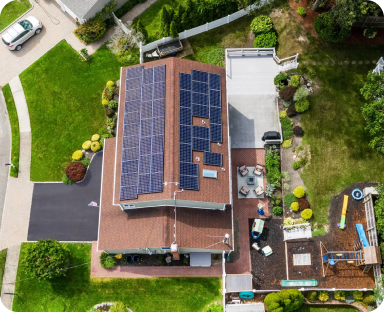Solar Heating Systems & Solar Hot Water Heaters Guide

Dec 17, 2019
by Tara McDermott


As the winter season approaches, we often get questions about heating your home with solar power as a cheaper and more energy efficient source. We’ve broken down the different ways you can use solar power to heat your home and hot water. Solar heating systems and solar hot water heaters vary greatly, so here is an overview so you can better understand if making the change to solar heating is right for you and how to Electrify Your Life®.
Electric Heating and Cooling
In our region, electricity rates are very high, so using electric space heaters to warm your home is not very efficient. Luckily, technology has advanced over the years, and many of our clients are switching to highly efficient geothermal heat pumps or air-sourced heat pumps that use electricity to function. These units do both heating and cooling, so upgrading to this type of system can help you avoid installing/upgrading a central AC system as well as your gas or oil heating system.
Electric hot water units have also become very efficient over the years, so they are becoming more popular in both new construction homes as well as homes with failing oil-powered hot water systems.
While geothermal heat pumps, air-sourced heat pumps, and electric hot water units don’t work directly off of solar energy, they pull straight from the home’s power source. As long as your home is solar powered, these units would be too! These units can be used on any home, but a solar-powered home could lower the operating costs of these units even further.
Pairing solar panels in a home with a geothermal or air-sourced heat pump system is extremely efficient in our region and the most cost effective and renewable way to power, heat, and cool your home all in one!
How do geothermal ground source heat pumps work?
A geothermal heat pump is a central heating and/or cooling system that transfers heat to or from the ground. The earth’s surface is an average 50 to 60 degrees Fahrenheit, a lasting and natural source of heat. The geothermal heat pump uses this constant heat source by transferring the heat to provide a source of heat energy for space heating, a heat sink for space cooling and a source of heat for domestic hot water.
Combining solar with geothermal heating and cooling helps homeowners maximize the benefits of clean, renewable energy and gain control over their energy bills. Gaining popularity as an efficient renewable energy source for heating/cooling, geothermal systems have been made more affordable due to generous incentives provided by New York State, the federal government, and PSEG Long Island.
How do air source heat pumps work?
Air source heat pumps are often referred to as a reverse cycle air conditioners, which work by absorbing heat from the outside air and releasing it inside as hot air, hot water-filled radiators, under floor heating and as domestic hot water supply.
Air source heat pumps have been used for quite some time, but haven’t been perceived as the best option for heat in subfreezing temperatures. In recent years, the technology for air source heat pumps has advanced to be able to properly offer an efficient heating alternative to even subfreezing climates.
Solar Thermal Heating
How do solar heating systems work?
Solar thermal heating systems work by converting solar energy into usable heat instead of electricity. When it comes to solar heating systems, there are two options for solar heating; solar water heating and solar space heating.
Solar thermal water heating works by capturing thermal energy from the sun and using it to heat water. With solar water heating, there are two types of systems solar water heaters use, passive; which uses gravity and natural circulation and active; which uses controls and pumps to circulate the water.
Solar thermal space heating works similar to solar water heating though it requires bigger storage units as well as more collectors. The thermal energy is harnessed at the solar collectors and used to heat either a liquid or air, which is then circulated to disperse heat.
The Parts of a Solar Heating System
A solar collector is a device that collects and/or concentrates solar radiation from the Sun. There are two types of solar collector devices that are primarily used for active solar heating and allow for the heating of water for personal use. A solar flat plate collector consists of a large heat absorbing plate, a large sheet of copper or aluminum which is painted or chemically etched black to absorb as much solar radiation as possible for maximum efficiency. An evacuated tube collector receives incoming solar radiation. The absorber moves energy to the copper heat pipe where energy is stored by the working fluid, the vapor cools, condenses and returns to the base of the heat pipe where the process is then repeated.
Solar pumps are used to circulate the heat transfer fluid through the array and are used to control the temperature in your solar storage tank. The pump inside the solar pump station is activated by a signal from a solar differential controller.
Solar storage tanks store heat collected from the evacuated tube collectors to be used whenever needed. Solar storage tanks come in a variety of sizes to match the number of collectors, size of space, and goals you have.
Are solar heaters worth it?
Using solar panels to power heating systems reduces the amount of air pollution and causes no greenhouse gases to be emitted. Using fossil fuels such as oil, propane, and other petroleum products emits high amounts of greenhouse gases which ultimately leads to global warming. Making the switch to solar to heat your home and/or hot water allows you to reduce your reliance on traditional heating sources and provide renewable clean power that is available every day of the year, even cloudy days produce some power.
Will solar heaters save money?
The American family will spend on average over $2,000 a year in heating costs. In our region of the north east, that cost is even higher! Heating systems that rely on fossil fuels, such as oil, propane, and natural gas are susceptible to high swings in fuel prices. Making the switch to heat pumps and powering them with a home solar panel system could save you anywhere between 30 and 40 percent on your utility bill.
PSEG Long Island is currently offering rebates for ground source heat pumps, offering $1,000 or $2,000 per ton depending on the efficiency level of the equipment and additionally matching ENERGY STAR® which more than doubled a three-ton ground source heat pump system from $1,200 to $3,000. Federal tax credits are also being qualified for Solar Heating Systems, the Bipartisan Budget Act of 2018 reinstated the residential renewable energy tax credit for renewable technology including ground source heat pumps. You may claim 30% for qualifying systems.
A typical home can switch to solar-powered heating and cooling for between $15,000 and $25,000 for a brand new system that does both heating and cooling. This system would use between 5,000 to 9,000 kWh per year. ($1,050 – $1,890 electric costs with out solar – PSEG and ConEd rates of .21 cents per kWh.) ($600 – $1080 electric costs with solar panels at .12 cents per kWh levelized cost of energy estimate.)
Stop overpaying for electric. Go solar with $0 down.

Stop overpaying for electric. Go solar with $0 down.
About the Author

Tara represents EmPower Solar as the Chair of the Long Island Solar & Storage Alliance where she is the government liaison for policy issues related to solar and energy storage. In 2018, Tara was named one of the Top 50 Women in Business by the Long Island Business News. She was also inducted into the Social Justice Distinguished Scholar Academy for her work in environmental justice issues in collaboration with Farmingdale State College.